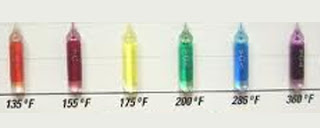How do fire sprinkler heads work

While there are numerous options when it comes to a fire sprinkler head, they all perform the same basic function: containing and extinguishing fires. Most sprinklers are composed of a plug, a temperature-sensitive glass bulb, a deflector, and a frame. Functionally, it is fairly simple. The glass bulb is filled with a glycerin-based liquid which expands to break the bulb at a specified temperature. Once that happens, the flow of water held back by the bulb flows out towards the deflector which disperses it on to the fire.
There's a range of options to consider for each sprinkler type. Arguably, the single most important is temperature, which determines at which ceiling temperature the sprinkler will activate. Options range from 135 to 360 degrees Fahrenheit, which is easily recognizable by the bulb color.
The finish is also something to consider. Each manufacturer offers different options but most common are chrome, white, and brass. Finally, there's the option of standard response or quick response, which determine reaction speed and, more importantly, the sprinkler's mission. The main physical difference between standard response and
quick response fire sprinklers is the size of the bulb. Quick response sprinklers have a smaller bulb, leading to a slightly faster response time.
Finally, sprinklers are available in two primary sizes: 1/2" and 3/4". A 1/2" sprinkler is the most common for office buildings, hotels, and schools. 3/4", on the other hand, are larger and used when extended coverage is necessary. For the purpose of this article, we're only going to highlight 1/2" sprinklers but all the types listed below are available in 3/4" variants, too.
So with this quick background out of the way, let's move on to exploring the four primary types of fire sprinklers: pendent, upright, sidewall, and concealed.

